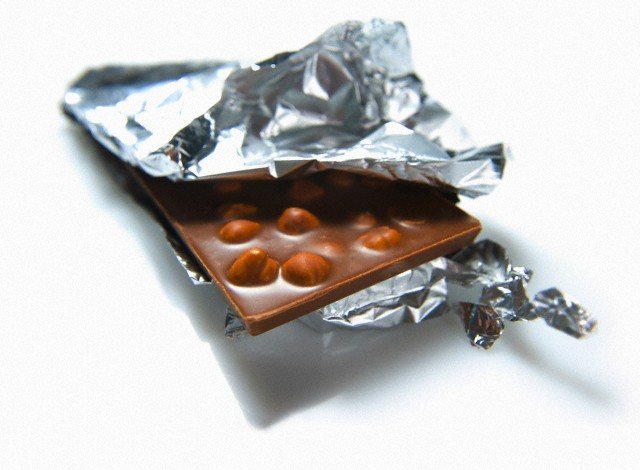Italy at the forefront in the flexible packaging industry. Interview with Giuseppe Giordano.
One of the most successful Italian export sectors is machinery for food packaging and kitchen tools, even in specific markets such as the Islamic one where it’s necessary to consider the needs of the process as well as the product – including the highly-controlled halal food production and packaging chain. For insight into this industry, we interviewed Giuseppe Giordano, chemist and researcher in the electro-metallurgical industry, who served as the facilities director and technical director for several companies in the industry and who also has extensive experience in the Middle Eastern market.
What contribution have Italian companies made in the food packaging industry?
Italian industry has always had a strong export sector; in recent years it has even succeeded in improving its international position. Italian manufacturers of flexible packaging machinery represent a level of national excellence that’s recognized worldwide.
Italian companies offer a full range of industry products. Italy is the worldwide leader in flexographic and rotogravure printing presses, and in those used for paper packaging and converting.
The packaging industry’s graphic and functional machines are concentrated in districts like those of Casale Monferrato, Bergamo and Piacenza, where the various production technologies have driven innovation throughout the process chain.
Mechanical technologies have always been a strong point for Italian companies, but in a few industries, such as this one, the “electronic revolution” has happened and the machines are equipped with the latest electronic technology and specific internal software developed within individual companies.
Italian industry has fully understood that packaging, in addition to being principally dedicated to the product protection, is also a communication tool. In this aspect of relationship marketing, packaging can play an extraordinarily significant role as one of the first elements that comes into contact with the consumer. Being perfectly printed with a broad range of colors makes the product recognizable on supermarket shelves, while precisely and legibly printed tables of dietary and nutritional data reveal the content’s most important aspects and allow the consumer to make a more informed purchase.
In addition, Italy has developed a complex culture of cookware, differentiated by materials, shapes and surface finishes. This abundance of variety has spurred the growth of a major industry for home and professional cookware, also able to pair functionality with the design features typical of Italian products.
Food and its distribution, conservation which ensures that flavors and aromas are maintained. How much is packaging involved in researching the best results?
Packaging is the first line of defense in maintaining the hygiene of foodstuffs and its effectiveness allows the products to be widely distributed. Many economists predict that in the near future agricultural and food products will replace oil and other energy as the primary classification for wealth.
It thus becomes imperative to reduce packaging waste, simplify its use and dissemination, while utilizing and exploiting its advantages. To achieve this goal, working together plays a major role in the development of good packaging. Along with the positive aspects, it’s worth remembering that the effect seen to date is the increase of boxes and bags in such numbers as to have necessitated, for years now, convincing actions, together with the development of legal instruments, to ensure that higher reclamation and recycling rates are achieved.
At the European level the need to reinforce the use of permanent materials is stressed…
In the competition between materials, metals – in addition to their fundamental advantage of a non-porous structure and thus a high barrier – may provide, as mentioned, better recyclability. Metallic materials have the characteristics that define them as “permanent” materials. Permanent materials should not change their characteristics during the recycling process and do not require the addition of primary material in order to once again perform their original function and thus help to create a “zero waste system.”
What’s the forecast for the aluminium packaging industry in the coming years?
Considering what I just mentioned along with historical consumption data, it’s foreseeable that the metal packaging sector will experience further growth in the coming years that will focus on aluminium products. For some products, such as cans and aseptic cartons for shelf-stable milk, consumption increase is accompanied by an increase in consumer purchasing power, i.e. the economic improvement of areas in the developing world. In the Aluminium industry one must then add foil, both in rolls for domestic use and the rather larger proportion used in flexible packaging.
It‘s evident that the next problem is the availability of laminates. Over the next 10 years intense growth in the production of aluminium sheet for the automotive sector is expected. Recent studies predict that by 2025 the automotive industry will need about 15 million tons of sheet metal and a similar quantity for castings in the motor vehicle sector. This means that even the vibrant Chinese growth in this sector will not be sufficient, within that time frame, to cover the food, beverage and transport needs of more than seven billion consumers. The next few years, therefore, should be characterized by intense investment in rolling with the expansion of existing plants and especially by the implementation of projects in areas that enable the technical and economic optimization of the process.
Exceptionally helpful in this capacity is the process of reducing the thickness of the product (for example foil) while maintaining the same performance. The process has long been used by foil manufacturers to obtain the best results in reducing raw material use in packaging production. The most famous example is the aseptic milk packaging that sealed Tetrapack’s success. When it debuted in the ’50s and ’60s, the multi-layer laminate: paper – aluminium – polyethylene, used a 12-micron foil. Almost two decades later, similar oxygen and light barrier properties were guaranteed by a foil of only seven-thousandths of a millimeter, soon replaced by the 6.35 micron foil that is still the standard most widely used.
© 2016 Art Valley. All rights reserved
Image © the food passionates/Corbis
